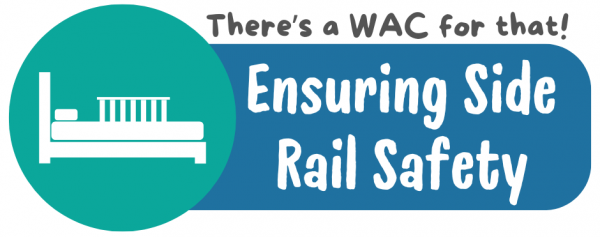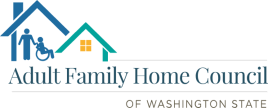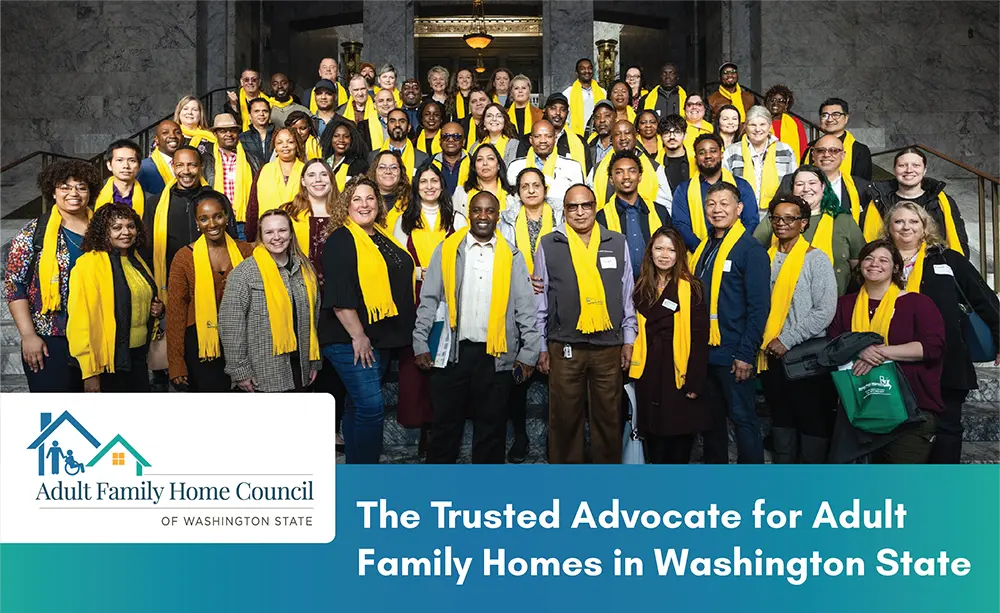
There's a WAC for That!
Ensuring Resident Safety with Proper Use of Side Rails
Dear Adult Family Home Providers,
We want to remind you of the important guidelines regarding the use of side rails (bed rails) to ensure the safety and well-being of your residents. Side rails can be beneficial for preventing falls and assisting with mobility, but they also pose significant safety risks if not used correctly.
Key Points on Side Rail Use:
1. Assessment Requirements:
- Private Pay Residents: An assessment for the use of side rails can be conducted by a Doctor (MD), Advanced Registered Nurse Practitioner (ARNP), or Registered Nurse (RN).
- Medicaid Residents: For residents covered by Medicaid, the assessment must follow specific procedures outlined in the ALTSA Long-term Care Manual Chapter 3.41. This includes completing the DSHS form 13-906, which must be signed off by a Physical Therapist (PT) or Occupational Therapist (OT).
2. Risks Associated with Side Rails:
- Strangulation, suffocation, bodily injury, or death: Residents can get caught between the rails or between the rails and the mattress.
- Skin injuries: Bruising, cuts, and scrapes.
- Increased fall risk: Residents may fall while trying to climb over the rails, leading to more serious injuries.
- Emotional distress: Feeling agitated, isolated, or restricted.
- Loss of independence: Inability to perform routine activities like going to the bathroom.
3. Best Practices:
- Avoid using side rails.
- Encourage safer alternatives such as trapeze bars or standing transfer poles.
4. Policy Compliance:
- Assessment and Documentation: Ensure that all assessments are properly documented. For Medicaid residents, use the DSHS form 13-906 and obtain the necessary signatures from a PT or OT.
- Alternatives and Recommendations: Discuss alternatives with residents and their representatives. Ensure proper evaluation and documentation before using side rails.
- Authorization and Purchase: Follow established procedures for purchasing and installing side rails, ensuring compliance with safety standards.
WAC 388-76-10650: Medical Devices
- Prohibition on Unsafe Use: Adult family homes must not use medical devices with known safety risks as restraints or for staff convenience.
- Assessment and Information: Before using such devices, homes must:
• Complete an assessment identifying the resident’s need and ability to safely use the device.
• “Provide residents and their families with information about the device’s benefits and risks”.
• Include the device’s use in the resident’s care plan.
• Ensure proper installation of the device.
Resources
- Form: Therapy Evaluation for Bed Transfer / Positioning Devices (Typically Bed or Side Rails)
- Dear Provider Letter: Recall of Certain Bed Rails
- Brochure: A Guide to Bed Safety
- Long-Term Care Manual Chapter 3: Assessment and Care Planning
- Form: Assessment for Medical Devices
Conclusion
Ensuring the safe use of side rails and other medical devices is crucial in adult family homes. By adhering to these guidelines and the specific requirements for private pay and Medicaid residents, we can protect our residents from potential risks and promote their well-being.
For more information, please refer to the full guidelines and policies in the ALTSA Long-term Care Manual Chapter 3.41.
Not a Member Yet?
Membership fees enable the Council to cover legal expenses and fund staff to advocate with the state and regulatory agencies. The participation of every adult family home is vital to ensuring fair regulations and rates that accurately reflect the costs of caring for our vulnerable adults. Consider becoming a member of the Council to help us continue improving conditions for all adult family homes in Washington State.

